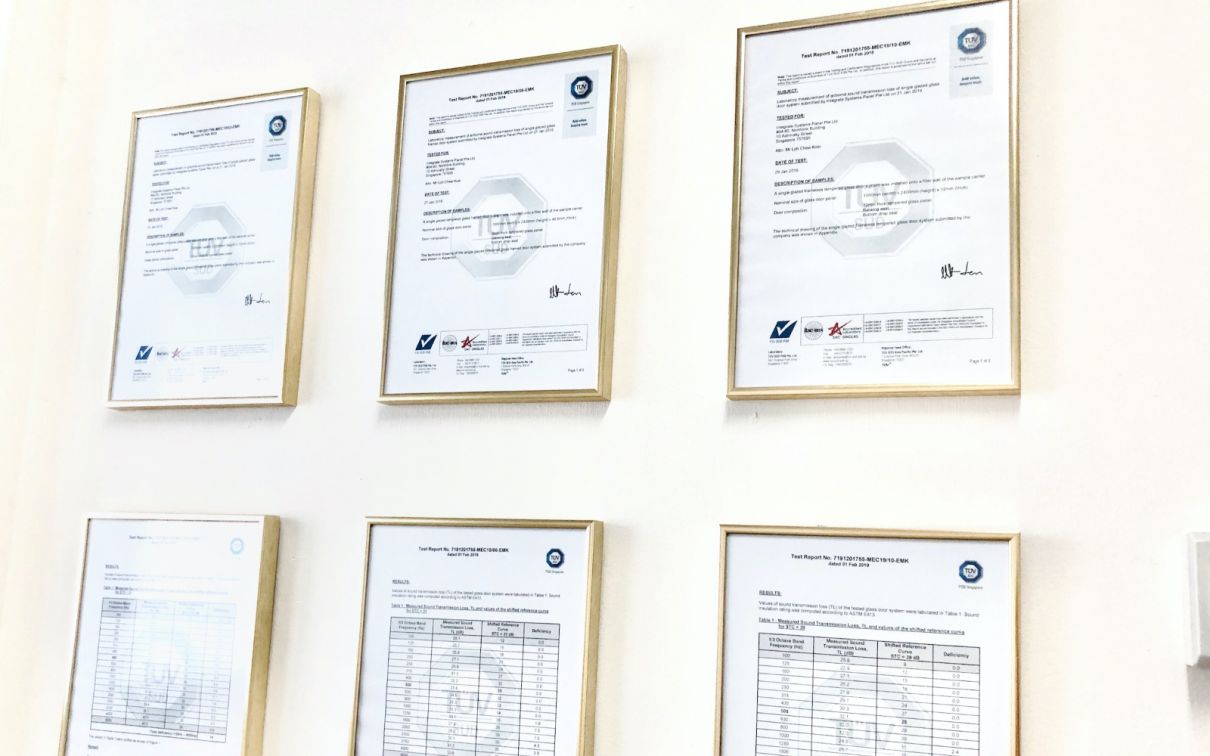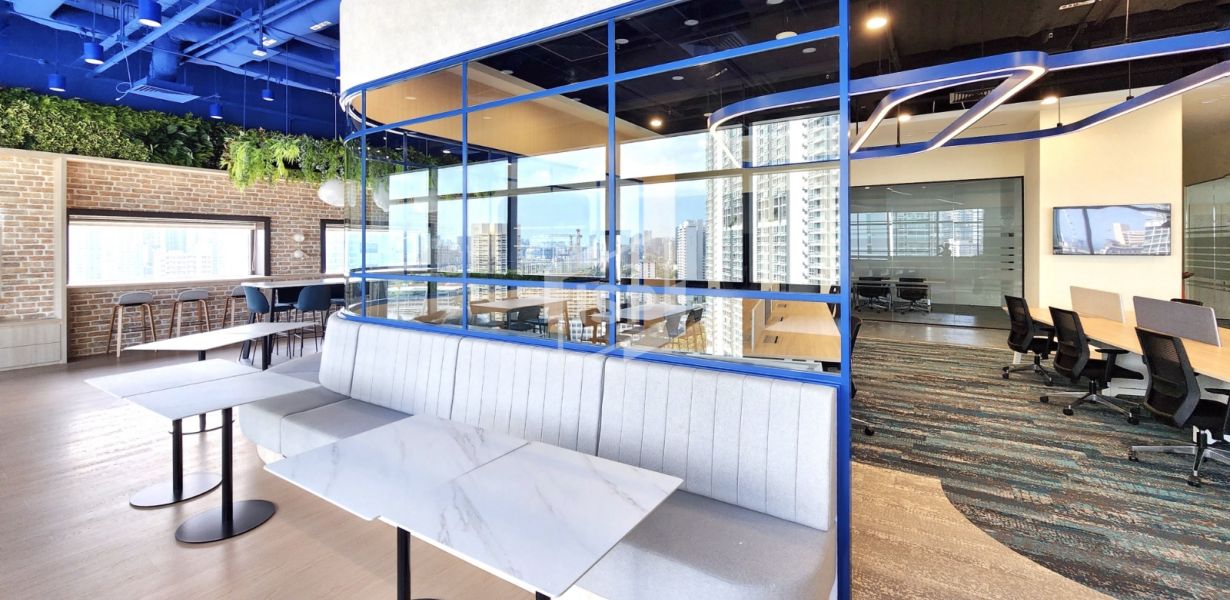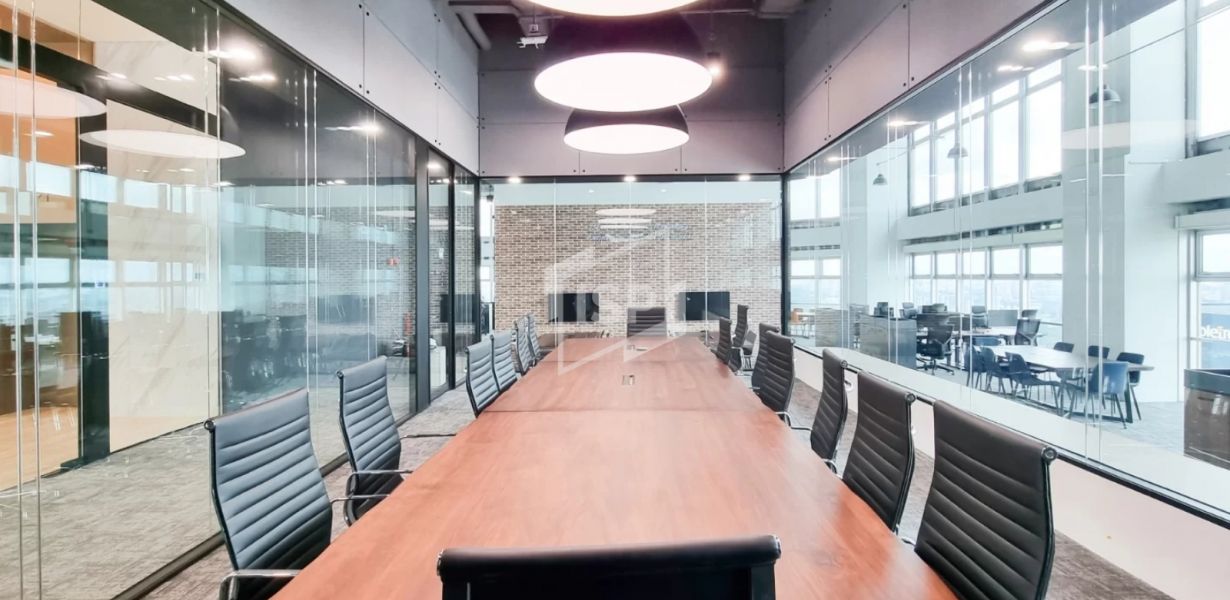Questions to ask of the Acoustic Rating Certificate

Acoustic glass partitioning systems are great ideas for modern offices that want to maximise the amount of natural lighting and element of privacy in an open workspace. It is a great alternative to solid walls and doors for dividing an office, creating private areas for meetings and focused work. With the growing demand for acoustic partitions, we see more suppliers available in the market, often offering and boasting high acoustics standards for its product, but how do we know if it is credible?
We have set out the below questions, which should serve as a guide to evaluate a supplier’s acoustic certificate (or ‘certificate’):
Q1. Was the test carried out in an accredited laboratory?
Firstly, for the acoustic rating value to be credible, it must have been obtained in an accredited laboratory. At ISP, all of our acoustic testings are carried out and certs are obtained and issued by TÜV SÜD PSB.
TÜV SÜD PSB is accredited under the Singapore Accreditation Council Singapore Laboratory Accreditation (SAC-Singlas) Scheme and its acoustics laboratory is the most comprehensive in Southeast Asia, offering world-class acoustics testing services to meet various international standards ranging from ISO, ASTM, BS, IEC and national requirements.
For our systems, they are tested for the laboratory measurement of airborne sound transmission loss (TL) and the sound insulation rating was computed according to ASTM E413. The results of the tested partition or door system are then denoted by the sound transmission class (STC), which is an integer rating of how well a building partition attenuates airborne sound.
Note: When comparing one acoustic certification to another, direct comparison should be made in accordance with the tested product and testing conditions.
Q2. Was the test applied to a properly dimensioned partition?
Secondly, it is important to make sure that the test certificate states the test sample size. Glass partitions are full height structures and would normally comprise several panes of glass. So, it would be unfair if the tested partitions are ‘windows’ or ‘glazing’ in smaller sized openings, as a smaller dimension test sample would give an artificially higher acoustic rating as compared to the testing of a full-sized representative sample with multiple modules of glass, glazing joints, and perimeter track-work.
Q3. Was the acoustic rating data produced using modelling software?
Lastly, if the acoustic rating data are software modelled performance values, it should not be compared to laboratory tested values. Software modelled performance values are designed to give a guide on the partition’s potential performance, and they are not proof of actual performance. Once again, it reiterates the importance of the test to be carried out in an accredited laboratory.
In conclusion, understanding where the glass partitions were tested; what size was it tested in and how the glass partitions were tested are important factors to consider when evaluating a supplier’s acoustic certification. Not only will this allow a fair comparison, it will also give you peace of mind that the system you specify is fully tested and certified. With our partitions and door systems tested at accredited laboratory, should you require our test results, reach out to us and we will be happy to share them with confidence!



